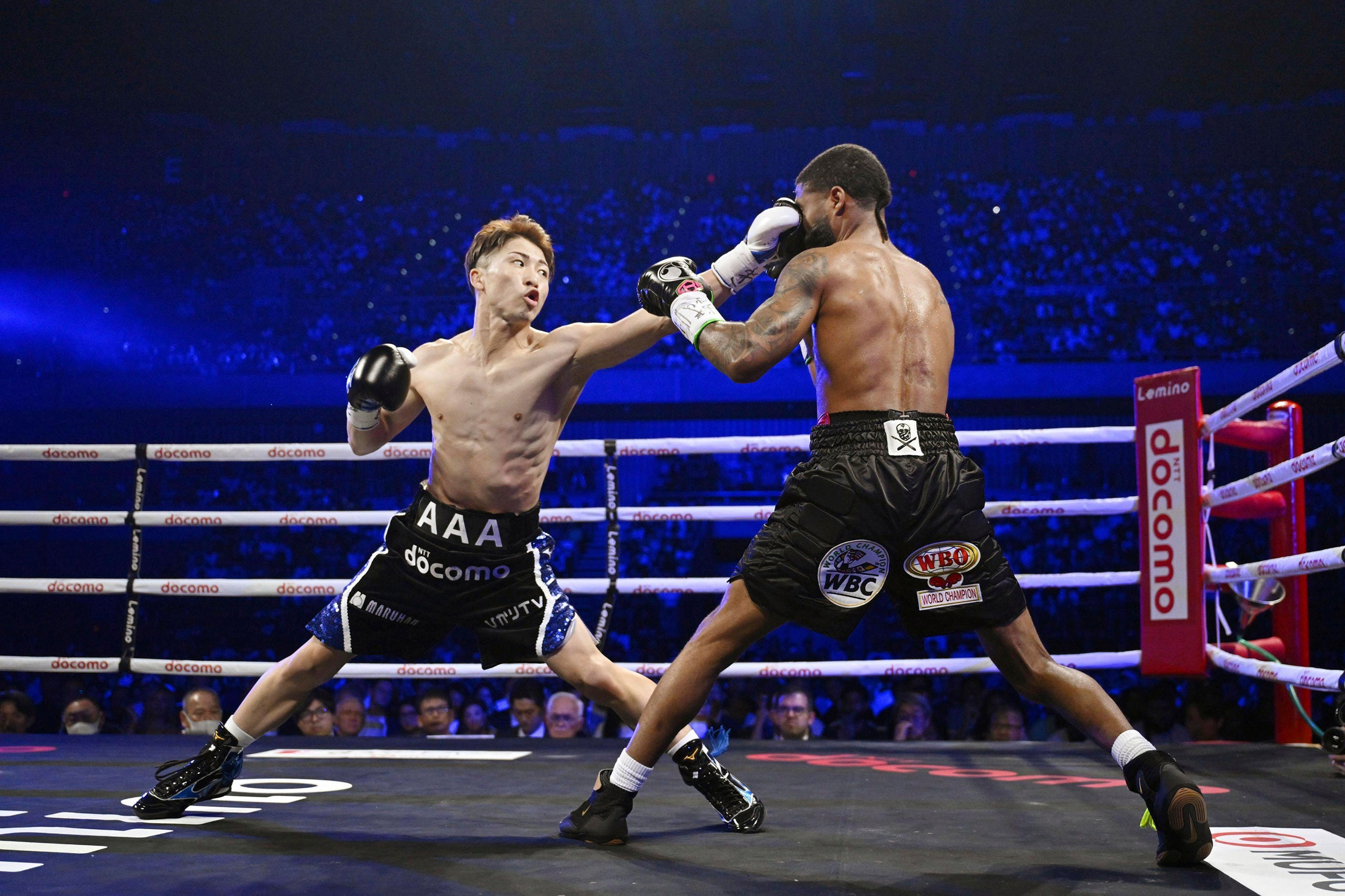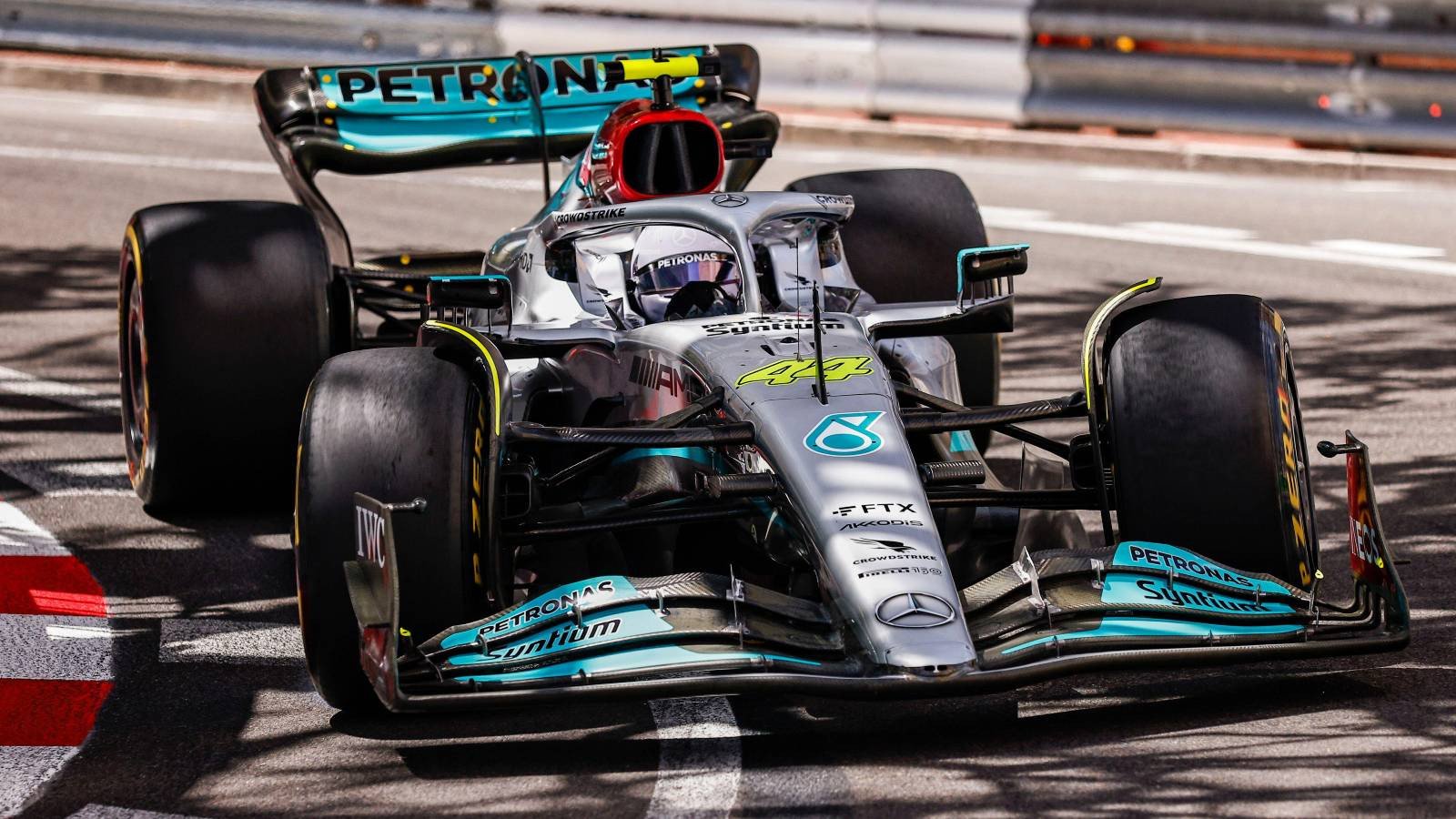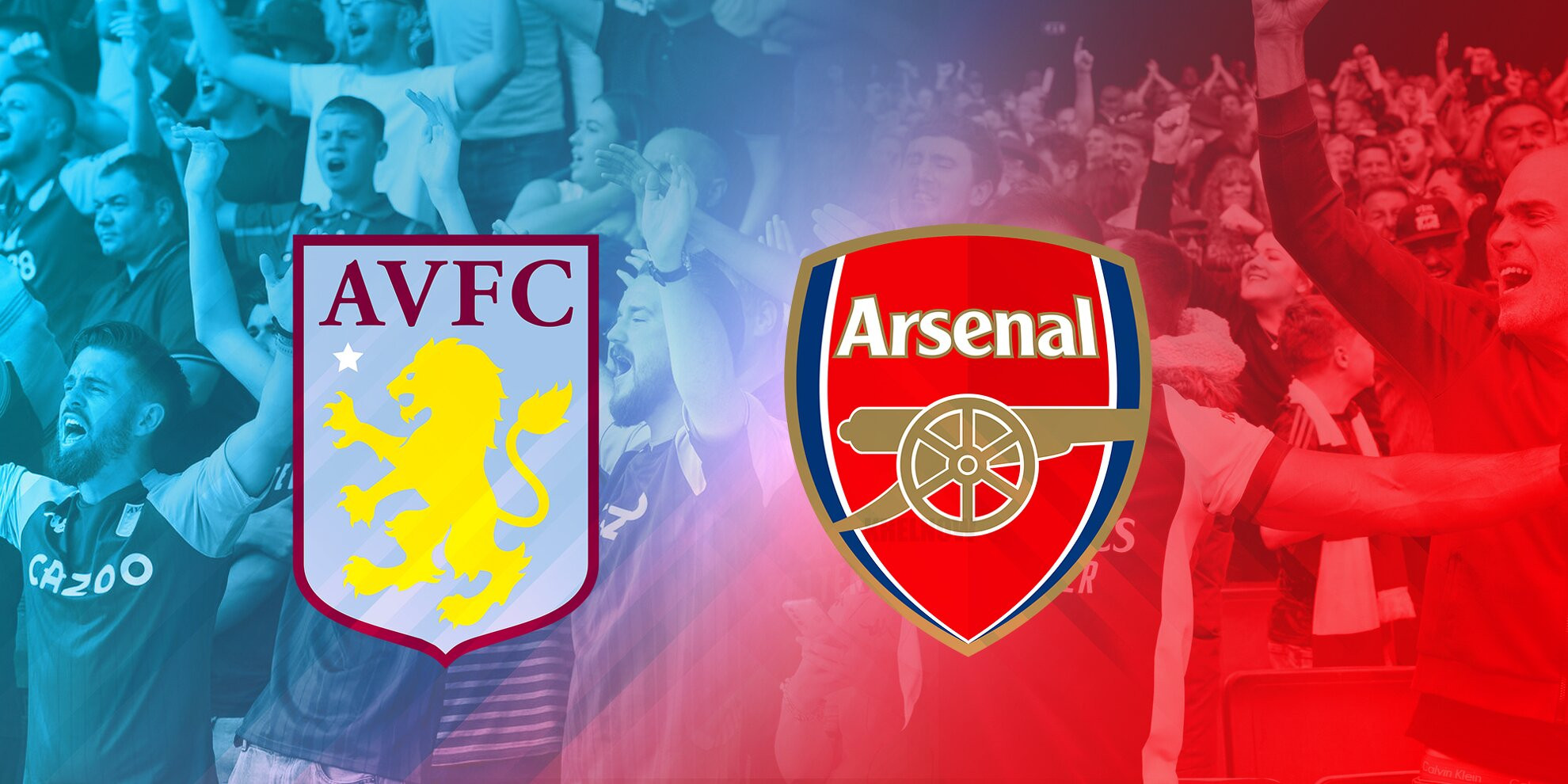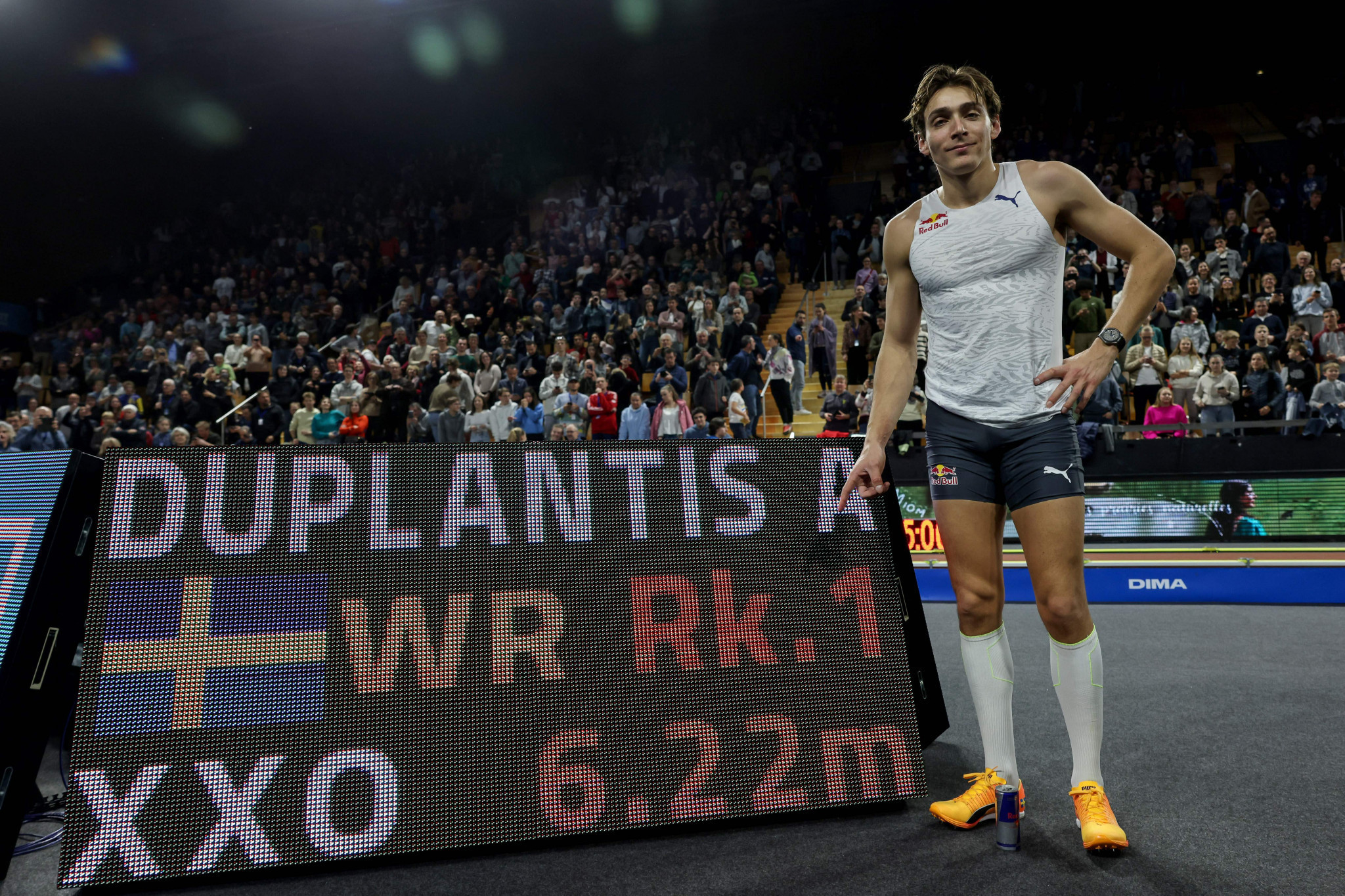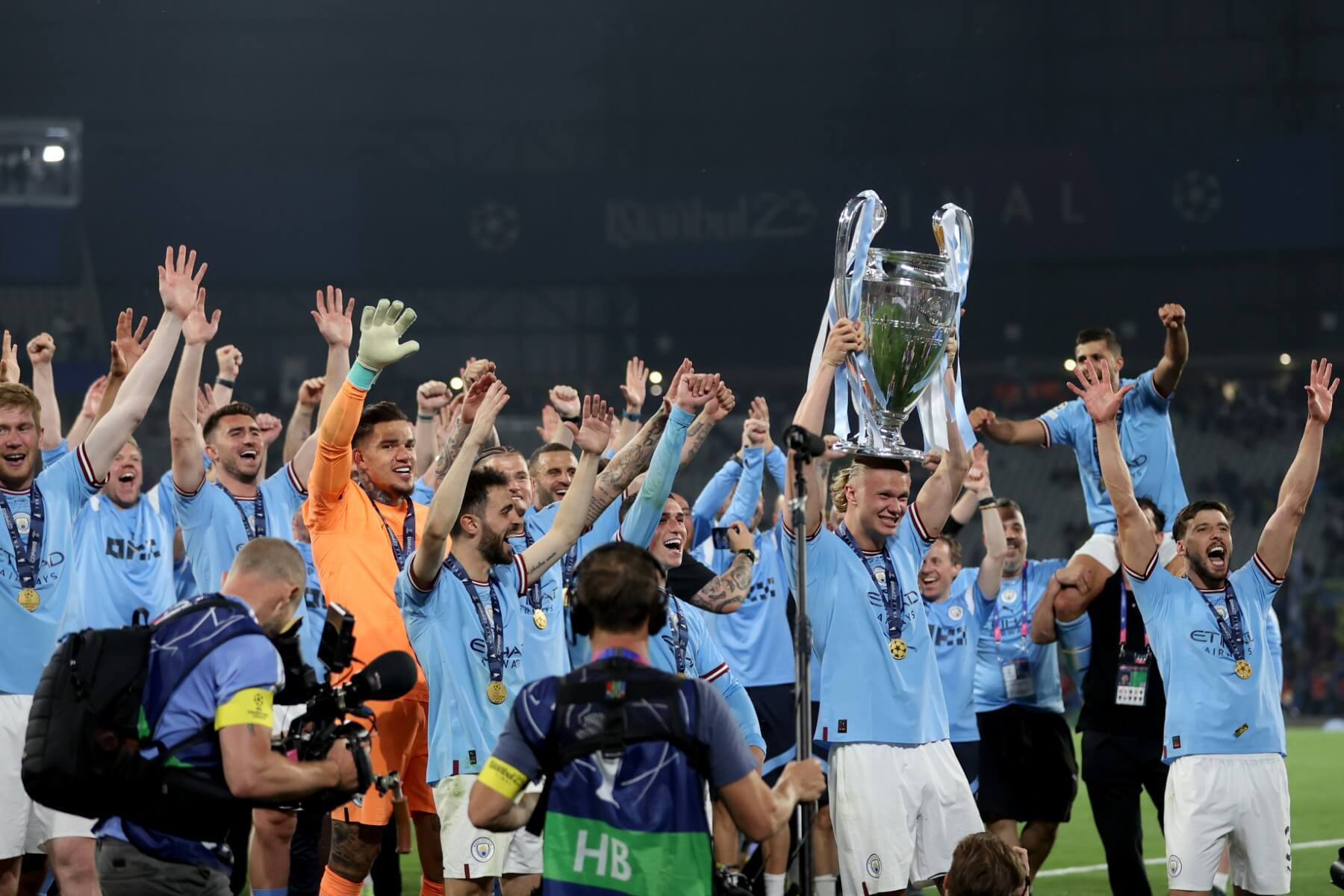55,000 fans fall into stunned silence. Naoya Inoue tumbles to the canvas for the first time in his 12-year professional career. The usually unflappable Japanese boxer looks to have been rattled by Mexico’s Luis Nery. But, in an act befitting his unbeaten record, Inoue rose from the ground and asserted his typical dominance over Nery, knocking him down in the second and fifth round before finally ending the fight in the sixth. What was for a brief moment a silent Tokyo Dome erupts as their hometown favorite adds yet another win to his unbeaten record; he is now 27-0 in professional bouts, winning 24 by knockout. Despite the early scare, Inoue’s victory allowed him to retain his undisputed super bantamweight crown, while also moving him atop The Ring magazine’s pound-for-pound boxing rankings ahead of such luminaries as Oleksandr Usyk, Terence Crawford and Canelo Álvarez.
Although opinions differ on who is in fact the best in the world at the moment, boxing expert Manouk Akopyan calls Inoue the “favorite choice for the boxing aficionado.” Inoue has been on The Ring’s top-10 pound-for-pound rankings for 366 weeks now, the second most behind Crawford, and he is clearly one of the most accomplished boxers in the world. So why is he not as well known outside of his native Japan as his contemporaries?
Like many boxers, Inoue’s first forays into boxing took place in his home country. He quickly established himself as a promising prospect in the sport, winning the WBC light flyweight title in just his sixth fight. Apart from a few select appearances abroad – he fought in Glasgow in 2019 and twice in the US during the Covid-19 pandemic, the first of which was held without spectators – all of his fights have been held in Japan. At these fights, Inoue’s popularity is evident. His fight against Nery in the Tokyo Dome in May was a sell-out and the first boxing event to be held in the arena since Mike Tyson’s infamous defeat to James “Buster” Douglas in 1990.
Japanese boxing expert Daisuke Sugiura told CNN Sport that Inoue is a “legitimate superstar” among his compatriots, adding that he is also “one of the best and most exciting active fighters in the world.” Sugiura, who has interviewed Inoue more than once, outlines that his personality away from the ring means he’s not constantly in the limelight, unlike many of his peers. “In the past, it was said that he did not particularly like to deal with the media, not that he didn’t like the media but more like he was shy and not the best interview, but recently he has been getting more attention and seems to have become better at dealing with interviews.”
That propensity to shy away from the media spotlight hasn’t affected his following though, with Japanese fans turning out in their droves to watch him fight. And it is that passion and marketability which has led him to fighting predominately in his home nation, minimizing his action abroad. Akopyan explains that Inoue’s popularity at home has made fighting abroad less appealing to the 31-year-old, calling him a “cash cow” in Japan. “He’s such a revenue generator in Japan,” Akopyan told CNN. “He’s not also inclined to come to the United States because of the fact that he makes so much more money in Japan, he’s a beloved hero.”
Conversely – given his American promoters, Top Rank, and with the large Japanese diaspora in the US – Akopyan and Sugiura both agree that there would be a market for Inoue to fight in North America. Akopyan points to the success that baseball star Shohei Ohtani has had since coming to the US – he has grown into one of the MLB’s biggest names – as a reason for why Inoue would be successful if he were to host more fights outside of Japan.
Another reason why Inoue might not be as widely known as others, say both Sugiura and Akopyan, is the weight class he currently fights in: super bantamweight or 122 pounds. The list of opponents he has fought are “off the grid fighters where, again, you have to be a hardcore boxing fan or an avid follower of the sport to know who he’s fought,” according to Akopyan. Akopyan explains that the heavier weight classes have traditionally produced the higher profile fights and bouts, highlighting the heavyweight, welterweight and lightweight categories as the “glamor divisions.”
Top Rank boss Bob Arum told BoxingScene in April that fighting in Japan is a benefit to Inoue given his weight class. “There’s nobody even close in those divisions [near Inoue’s weight class] who could make a fight bigger than what he can do in Japan,” Arum said. “This is completely different than Manny [Pacquiao] coming from the Philippines at a time where he couldn’t have fought anywhere and made more than $50,000. Fighting here did make him a global superstar.
“For Inoue, it’s the exact opposite. Although fighting in Japan creates a challenging road trip for his foes, their purses ease the discomfort. Their tongues are wagging out for an invitation.” Inoue’s fights at his weight classes have been overwhelmingly one-sided affairs and the combination of his dominance and the more glamorous names in the heavier divisions has led to calls for him to step up in weight to organize some of these potential bigger bouts. One opponent in particular fans have been clamoring for Inoue to face is Gervonta ‘Tank’ Davis, the WBA lightweight champion.
The pair currently have a 13-pound weight difference, so a potential fight looks to be quite a way off, but even the idea of the two facing one another is a tantalizing prospect. Akopyan even suggests that, such is Inoue’s draw, fighters might be tempted to drop weight to fight him. But for the time being, the Japanese star seems comfortable to remain at his weight class as he remains the fighter to beat for other super bantamweight competitors. Akopyan says Inoue “could probably have 20 people outside lining up” ready to fight him at any time.
Inoue will defend his undisputed super bantamweight title for the second time against TJ Doheny at Ariake Arena in Tokyo on September 3. It is possible that Naoya Inoue is the very best boxer in the world right now. He is certainly the best boxer you have never heard of or seen fight. He won his first world title 10 years ago, has added world titles at three different weights, and has stopped or knocked out 24 of the 27 men he has met in professional fights. On Tuesday morning in Japan, Inoue will have his 23rd world title fight when he defends his super-bantamweight titles against the tough Irish-Australian, TJ Doheny. It will be over by about round six.
Inoue has knocked out 20 of the 22 men he has met in world title fights since winning his first championship back in 2014. He started at just 108lb and is now a stone heavier at 122lb. He has held the light-fly, super-fly, bantam and now the super-bantam world titles. Had he not jumped the flyweight division, it would be five weights and he would have been untouchable at all those weights. In boxing history, great fighters have moved across the weight divisions, but they have never ruled like Inoue.
Last year, he met American Stephen Fulton in a move to super-bantamweight. At the time, Fulton was 21 wins without defeat, seasoned, the world champion at the weight, real quality, hard and he really tried; he was beaten methodically, made to suffer, broken and then dropped and stopped in the eighth round. It was stunning. In Inoue’s last fight in May, he had a real test on paper, but it finished in the sixth when he stopped Luis Nery in front of 40,000 at the Tokyo Dome. The numbers in the Dome also ruined the myth that he was not an attraction. The truth is that Inoue has been a one-man revolution in Japanese boxing and now the business is thriving.
Bob Arum, Inoue’s promoter, has been talking about the boxer for a long time and praising him, and one of his standard lines is: “He’s the best I’ve ever seen.” Arum is not kidding, and he grabs your arm to emphasise the statement. Inoue is now 31, unbeaten in a total of 27 fights, with just three of his fights going the full distance. He has beaten absolutely everybody of note in the weight divisions that he has ruled. He has knocked out unbeaten men, toyed with proven world champions, taken care of previously avoided fighters, and he has done it with both hands – leaving them stunned and confused on the canvas again and again.
There is often a look of shock on the faces of the good men that Inoue drops; they can go early, or they can struggle, bite down on their gumshields and survive a few rounds. They have tried to run, hide, stand toe-to-toe, but Inoue just takes control and finds the cleanest and most clinical of punches to send them all tumbling. On Tuesday, it will be Doheny’s chance to stop Inoue’s rise. Doheny was born in Ireland but has lived in Australia; he held the IBF super-bantamweight title in 2019, has lost four of his 30 fights and has never been stopped. At 37, he is still a hard man to beat easily; Inoue, unfortunately for Doheny, is good at making history and hurting men.




